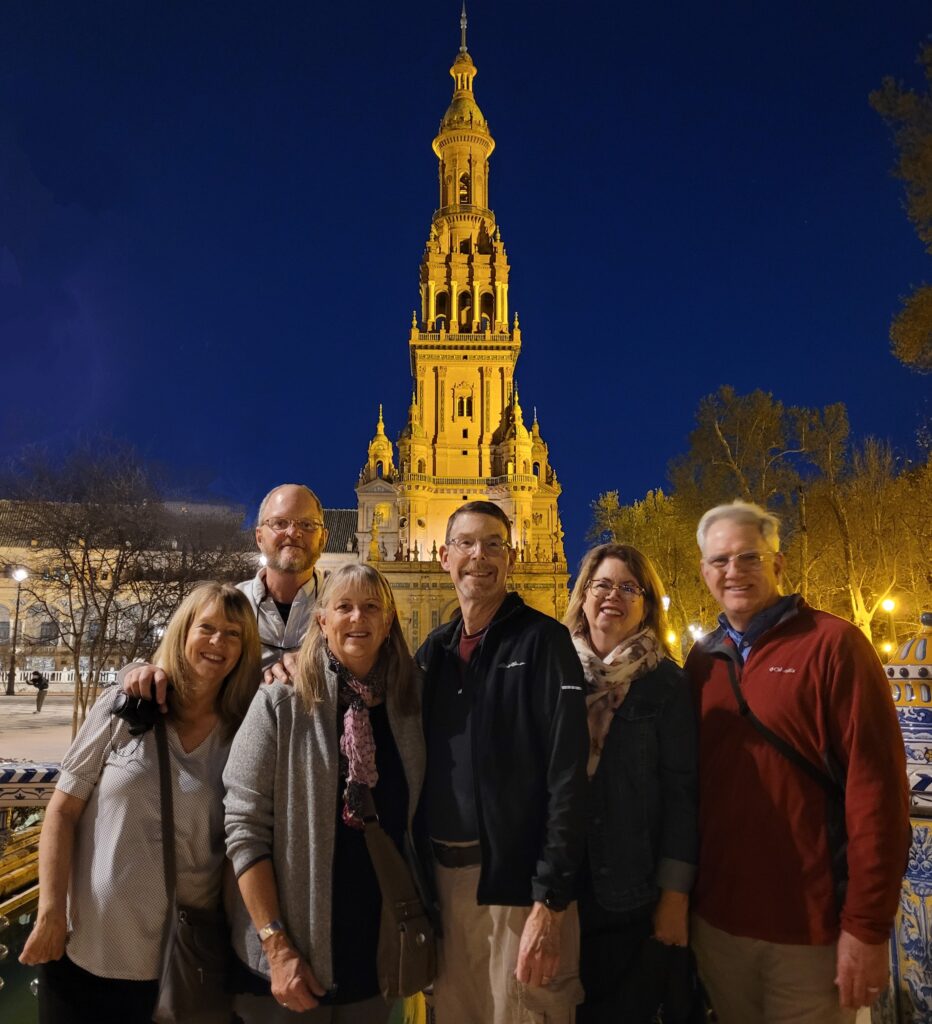We spent the second half of March traveling Spain with Marv & Laurie Baker and Sue & Dean Hereford. The entire visit dramatically exceeded our expectations. The landscapes are arid and beautiful, the cities immaculate, the food unusual and delicious, and the people warm and friendly. To top it off, the wine was just outstanding.
The country has a lot of history dating back thousands of years. Like so much of Europe, their culture revolves around successive invasions and occupations of empires from the north, south, and east. In my eyes, the most impactful modern event was the brutal Franco dictatorship from the 1930’s to the 1970’s. People avoid talking about it and there are still controversies and festering wounds with the older generations. They take democracy very seriously today.
We covered a large part of the country by train and stayed in Madrid, Seville, Barcelona, Haro (Rioja), and San Sabastian. At first glance all five cities were very similar, but each had a unique vibe that took a couple of days to fully appreciate. Fortunately for us, we were there a few weeks ahead of the tourist season and the streets were largely filled with locals. Our impressions:
Madrid. A beautiful city with a great combination of historical and modern shops and stores. It was surprisingly family-oriented and children were out with their parents until late in the evening. Don Quixote is a thing in Madrid as it was the home of the author, Miguel de Cervantes. It is allegedly the best-selling novel of all time. In addition to walking and food tours, we took in a Flamenco dance. All six of us loved the place.
Seville. Each of the cities we visited had beautifully preserved “old towns” and Seville was no exception. It’s a renowned party town where the reputation is well deserved. Just about every night the city center comes alive with people of all ages that are out for a good time. It was a continuously festive atmosphere. One recurring theme is Christopher Columbus. The Seville area was “home base” for Columbus during his trips to the Americas and consequently he is still a hero there. We took a really nice day trip to Cadiz, an ancient seaside town that was home to the Phoenicians in the 1000 BC timeframe. It is considered the to be the oldest city still standing in Europe.
Barcelona. Arguably the most popular tourist destination in Spain. It’s large, stunning, and bustling. The city features a lot of uber cool architecture by, or in the style of, Antoni Gaudi. This includes the remarkable Sagrada Familia Cathedral. It is still under construction, but is a church like no other. Our biggest regret of the trip is that we didn’t stay another day in Seville and see the inside of this masterpiece.
Haro. With a population just over 10,000, it’s more of a village than a city, but has an irresistible charm about it. It sits on the eastern boundary of Rioja and houses several large wineries. This was our base camp for visiting the greater Rioja region to taste wine. We stayed in an apartment 100 yards away from the village square and enjoyed a heavy dose of locals just living their lives.
San Sabastian. If we had to choose one, this was our favorite stop of the trip. San Sabastian, also known by the Basque name of Donostia, is located on the Bay of Biscay off the Atlantic Ocean. It features beautiful beaches and breathtaking water views as well an outstanding old-town. It is generally considered the “food capital of Spain” and for good reason. The local specialty is bite-size tapas that are unique, inventive, and have amazing flavors. The combo of resort-like environment, sheer beauty of the bay, and the fantastic dining was just amazing.
In addition to the pictures below, there are a number of pictures of food and bonus images in addition to the pictures below.









































































